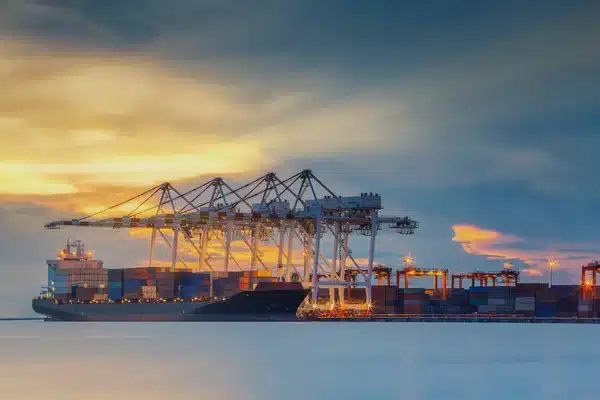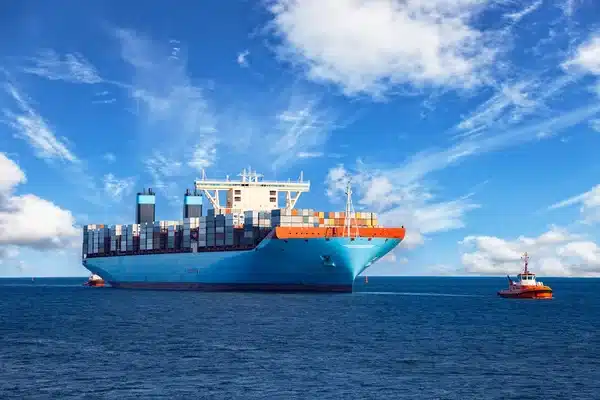In the world of international shipping and logistics, understanding the terms demurrage and detention is essential for effective cargo management. These charges are common in the shipping industry and can significantly impact the overall cost of transporting goods if not managed properly. Both demurrage and detention fees are levied to encourage timely handling of containers, but they apply to different stages of the shipping process. Knowing the distinction between these two fees helps businesses avoid unexpected costs and maintain efficient supply chain operations.
This article provides a detailed comparison of demurrage and detention, explaining their meaning, when they apply, how they differ, and strategies to minimize these charges. By understanding these fees, shippers can better plan their logistics, reduce unnecessary costs, and improve operational efficiency.

What is Demurrage?
Demurrage refers to a fee imposed by the shipping line when an importer or exporter fails to move the container out of the port or terminal within the free time allowed. The free time refers to the period the port or shipping line allows containers to remain at the terminal without charging any fees. After this period ends, the terminal starts applying demurrage fees daily until the container is moved.
Key Points About Demurrage:
Applies at the Port: Demurrage fees are applicable while the container is still at the port or terminal.
Encourages Quick Clearance: The primary purpose of demurrage is to encourage quick clearance of cargo to avoid congestion at the port.
Daily Charges: Demurrage charges are applied per day and can quickly add up if the container remains at the terminal for an extended period.
Example: When a container arrives at the port of Rotterdam, the consignee receives 5 days of free time to clear the cargo. If the consignee fails to clear the container within these 5 days, the terminal begins applying demurrage charges starting from day 6.
Tonlexing Demurrage Solutions: At Tonlexing, we assist our clients in tracking their container movements and ensure timely clearance to avoid demurrage fees. Our proactive approach helps you minimize costs and prevent delays.

What is Detention?
Detention refers to charges imposed when a consignee or shipper holds onto the container beyond the allowed free time after it has been picked up from the port or terminal. Unlike demurrage, which applies while the container is at the port, detention fees apply when the container is outside the port and in the custody of the shipper or consignee.
Key Points About Detention:
Applies Outside the Port: Detention fees are charged when the container is not returned to the shipping line within the agreed timeframe.
Free Time for Empty Containers: After unloading the cargo, there is a specified free time for returning the empty container to the shipping line. Detention charges apply if this timeframe is exceeded.
Daily Charges: Similar to demurrage, detention charges are applied daily and can increase significantly if the container is held for too long.
Example: A container is picked up from the port of Shanghai for delivery to a warehouse. The consignee has 7 days to unload the cargo and return the empty container. If the container is not returned within these 7 days, detention charges will apply from day 8 onwards.
Tonlexing Detention Management:
Tonlexing provides customized detention management services, helping you efficiently return empty containers within the allowed time frame. Additionally, our proactive approach minimizes extra fees and keeps your supply chain running smoothly. Our team works closely with clients to coordinate logistics efficiently and avoid detention fees.
Key Differences Between Demurrage and Detention
While both demurrage and detention are charges related to the use of containers, they apply at different stages of the shipping process and serve different purposes. Here are the key differences:
| Aspect | Demurrage | Detention |
|---|---|---|
| Location | Applies while the container is at the port or terminal. | Applies once the container has left the port or terminal. |
| When It Occurs | Charged if the container is not moved out of the port within the free time. | Charged if the empty container is not returned within the agreed timeframe. |
| Purpose | Encourages timely clearance of cargo from the port to avoid congestion. | Encourages the prompt return of containers to make them available for reuse. |
| Charges | Imposed daily until the container is cleared from the terminal. | Imposed daily until the container is returned to the shipping line. |
Understanding these differences can help shippers and consignees plan better and avoid unnecessary fees, contributing to a more efficient logistics operation.
Common Causes of Demurrage and Detention Charges
1. Documentation Delays
Incorrect or missing documentation can lead to delays in customs clearance, resulting in containers sitting at the port longer than expected. This often results in demurrage charges.
2. Inefficient Coordination
Lack of proper communication between the shipper, consignee, and freight forwarder can lead to delays in container pickup or return, causing demurrage or detention fees.
3. Customs Inspections
Containers may be held for additional customs inspections, which can prolong their stay at the port and lead to demurrage charges. Detention charges can also occur if the inspection delays the return of the empty container.
4. Lack of Warehouse Space
A shortage of available storage space at the destination can prevent timely unloading of cargo, leading to prolonged container usage and resulting in detention fees.
Tonlexing Logistics Coordination: At Tonlexing, we provide comprehensive logistics management services to ensure smooth coordination between all parties involved, minimizing the risk of demurrage and detention charges.
How to Avoid Demurrage and Detention Charges
1. Proper Planning and Scheduling
Planning shipments well in advance and coordinating with all parties involved can help avoid unnecessary delays. Ensure that all required documents are prepared ahead of time to facilitate smooth customs clearance.
2. Timely Customs Clearance
Working with experienced customs brokers can expedite the clearance process and minimize the risk of delays that lead to demurrage charges. Tonlexing offers expert customs brokerage services to help you clear goods efficiently.
3. Efficient Unloading and Container Return
Arranging prompt unloading of cargo and returning the empty container within the free time can help avoid detention fees. Tonlexing assists clients in coordinating delivery schedules to ensure timely unloading and container return.
4. Utilize Free Time Effectively
Make the most of the free time provided by shipping lines. Keep track of the container’s arrival date, and have a plan in place for immediate pickup, unloading, and return.
5. Work with a Reliable Freight Forwarder
Partnering with an experienced freight forwarder like Tonlexing can help manage your shipping timelines more effectively. Tonlexing offers proactive tracking and communication to ensure timely container movements and minimize the risk of extra charges.
Tonlexing Cost Management Services: Tonlexing provides end-to-end freight management services, helping you avoid unnecessary costs through proactive planning, real-time tracking, and efficient coordination with all stakeholders.

Best Practices for Managing Demurrage and Detention
1. Monitor Container Free Time
Keep a close watch on the free time allocated for each container. Knowing when the free time ends can help you plan your logistics more effectively and avoid unexpected charges.
2. Invest in Real-Time Tracking
Real-time tracking tools can help monitor container movements and identify potential delays. This information can be used to make quick decisions to avoid demurrage or detention fees.
3. Leverage Tonlexing’s Expertise
At Tonlexing, we use advanced tracking technology to monitor your shipments and ensure that deadlines are consistently met. Additionally, our experienced team provides timely updates, enabling you to take proactive measures in case of anticipated delays.
4. Establish Clear Communication
Establishing clear communication between shippers, consignees, and freight forwarders is crucial to avoid delays. Ensure that all parties are aware of key dates, including container pickup, unloading, and return deadlines.
5. Pre-Book Appointments
Pre-book appointments for customs clearance and delivery to ensure that there are no delays in container pickup or return. This can help avoid both demurrage and detention charges.
Tonlexing Appointment Management: We help our clients pre-book appointments for customs clearance and container delivery to ensure a smooth and timely process, avoiding delays and extra charges.
Demurrage and detention charges are common challenges in international shipping that can lead to unexpected expenses if not managed properly. While demurrage applies when containers stay at the port beyond the free time, detention applies when empty containers are not returned on time after leaving the port. Understanding the differences between these charges and implementing best practices can help shippers and consignees minimize costs and improve the efficiency of their logistics operations.
Partnering with a reliable freight forwarder like Tonlexing can make all the difference in managing these charges. Our comprehensive logistics solutions include tracking, coordination, customs brokerage, and proactive communication, ensuring that your shipments move efficiently through every stage of the supply chain. Contact us today to learn how we can help you manage your shipping needs and avoid costly demurrage and detention fees.


